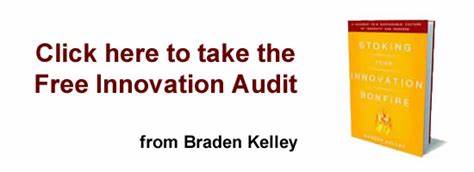
by Braden Kelley
There is so much talk about innovation these days, it’s hard to sometimes distinguish the signal from the noise.
In fact, the word innovation gets thrown around so much that it leaves people wondering:
What’s really innovative?
Well, most of the time that people talk about something being innovative, what they describe isn’t innovative, but instead inventive or creative. These three are all very different. Here is how I like to distinguish the differences between creativity, invention and innovation:
- Creativity – creates something interesting
- Invention – creates something useful
- Innovation – creates something so valuable that it is widely adopted, replacing the existing solution in a majority of appropriate use cases
Very few creative sparks result in an invention and very few inventions become innovations.
And the painful truth is that many great inventions take 20-30 years to be realized. Timing your investment is the key to whether you waste a big wad of cash, or still have it to spend when the optimal time to invest in a potential innovation comes.
If you look at most technology-based innovations, whether it’s the mp3 or the VCR, they were invented 20-30 years before they reached wide adoption in the marketplace, and for Gorilla Glass we’re talking more like 50 years.
To further emphasize the importance of timing…
Look at Webvan vs. Amazon Fresh
Look at Pets.com vs. Chewy.com (acquired by Petsmart)
Now these aren’t innovations, but you get my point. You have to know where you are on the commercialization timeline…
And most importantly, sometimes you have to look BACKWARDS before you look forwards, so you know where on the commercialization timeline you are.
If you’re working on a potential innovation now, are you sure it’s a potential innovation?
Are you sure now is the time to go big?
Read more about Premature Innovation
You might also enjoy Are You Innovating for the Past or the Future?
Image credit: Pexels
![]() Sign up here to get Human-Centered Change & Innovation Weekly delivered to your inbox every week.
Sign up here to get Human-Centered Change & Innovation Weekly delivered to your inbox every week.

 I had the opportunity to meet and chat with local ethnographic researcher Cynthia DuVal about the role of ethnographic research in the innovation process, and she shared an insight that I thought I would share with the rest of you.
I had the opportunity to meet and chat with local ethnographic researcher Cynthia DuVal about the role of ethnographic research in the innovation process, and she shared an insight that I thought I would share with the rest of you.
 Because the team will likely only get the insights mostly right, it is important that your go-to-market processes include a great deal of modularity and flexibility. In the same way that product development processes have to design for certain components that are ‘likely’ to be available, but also have a backup design available that substitutes already released components–should the cutting edge components not be ready in time.
Because the team will likely only get the insights mostly right, it is important that your go-to-market processes include a great deal of modularity and flexibility. In the same way that product development processes have to design for certain components that are ‘likely’ to be available, but also have a backup design available that substitutes already released components–should the cutting edge components not be ready in time.